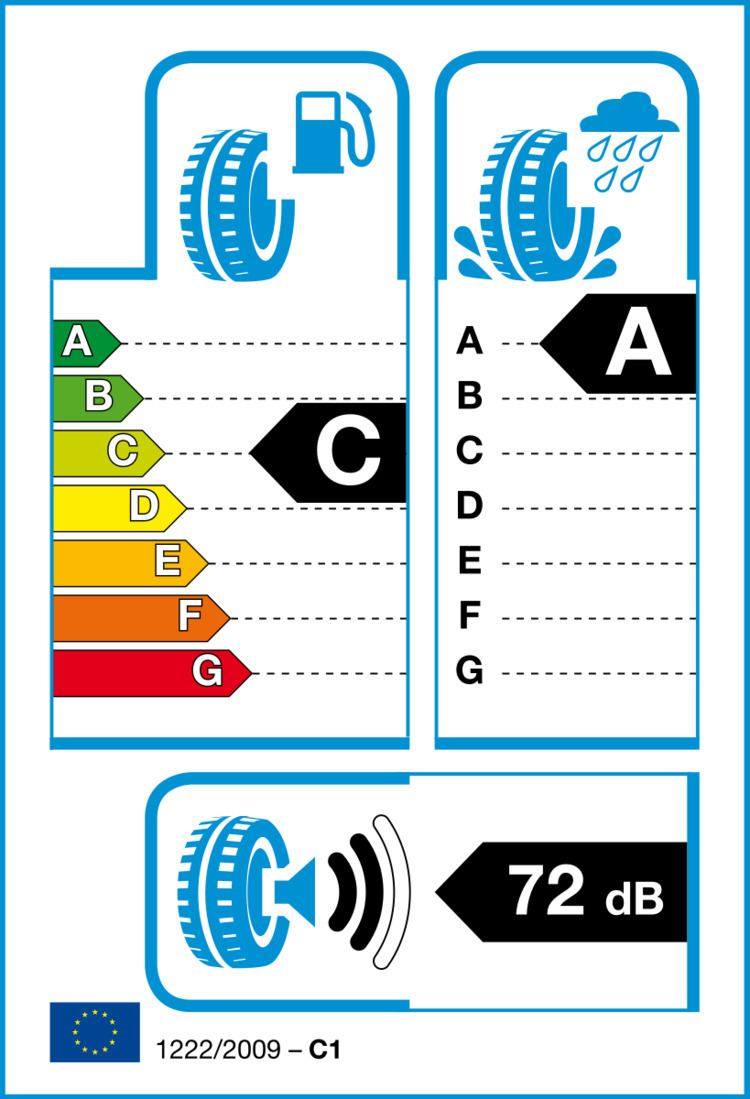 | ||
The Tyre Label is a mark for motor vehicle tyres. Manufacturers of tyres for cars, light and heavy trucks must specify fuel consumption, wet grip and noise classification of every tyre sold in EU market starting in November 2012. For passenger car, light truck and truck tyres the information must be available in technical promotional literature (leaflets, brochures, etc.), including the manufacturer website For passenger and light truck tyres, the manufacturers or importers have the choice of either putting a sticker on the tyre tread or a label accompanying each delivery of batch of tyres to the dealer and to the end consumer The tyre label will use a classification from the best (green category "A") to the worst performance (red category "G").
Contents
- Rolling resistance
- Wet grip
- Noise emission
- The Tyre Label will generally apply to
- Exceptions from labelling
- Tax on noisy tyres
- Tyre manufacturer
- Tyre dealer
- Car manufacturer
- EU Commission
- Critical View
- Driving Proviso
- References
This initiative results from a regulation by the EU Commission released in 2009. It is part of the Energy Efficiency Action Plan, designed to improve the energy performance of products, buildings and services to reduce energy consumption by 20% until 2020. The EU has already created a system for marking of electrical household appliances such as refrigerators, washing machines and televisions with the intent to inform the European population better about the level of their consumption.
(Source: European Commission)
Rolling resistance
Rolling resistance is the main key factor in measuring the energy efficiency of a tyre and has direct influence on the fuel consumption of a vehicle. A set of tyres of the green class "A" compared to a "G" class can reduce fuel consumption by 7,5% of a passenger car; even more for trucks.
'D' Grading is not used in rolling resistance grading for Passenger Cars and Light Trucks while it is used for Heavy Trucks
Wet grip
Basis for wet grip is the absolute stopping distance when driving 80 km per hour. Between each class, there are 3–6 metres difference in braking distance. Classes "D" and "G" are not used.
Noise emission
The driving by noise is quoted as an absolute value in decibel and as a 3 classes sound wave symbol. A continuous sound level above 80 decibel can cause health problems.
The Tyre Label will generally apply to
Exceptions from labelling
Tax on noisy tyres
Tyres that make too much roadway noise as determined by the EU, will have an extra tax/penalty imposed on them from November 2012.
Tyre manufacturer
Tyre dealer
Car manufacturer
EU-Commission
Critical View
The new label is designed to show information regarding 3 criteria, however there are many other important performance factors to consider including:
Automotive manufacturers require the very highest standard across all these performance factors before they approve tyres for their new vehicles. Furthermore, widely published tyre tests also take these performance factors into account and therefore continue to be an excellent source of independent information regarding the total performance of a tyre. Tyres that make too much noise as determined by the EU, will have an extra tax/penalty imposed on them from November 2012.
Driving Proviso
Actual fuel savings and road safety also depend heavily on the behaviour of drivers when using their cars, and in particular the following:
— Eco-driving can significantly reduce fuel consumption
— Tyre pressure should be regularly checked to optimise wet grip and fuel efficiency performance
— Stopping distances should always be strictly respected
